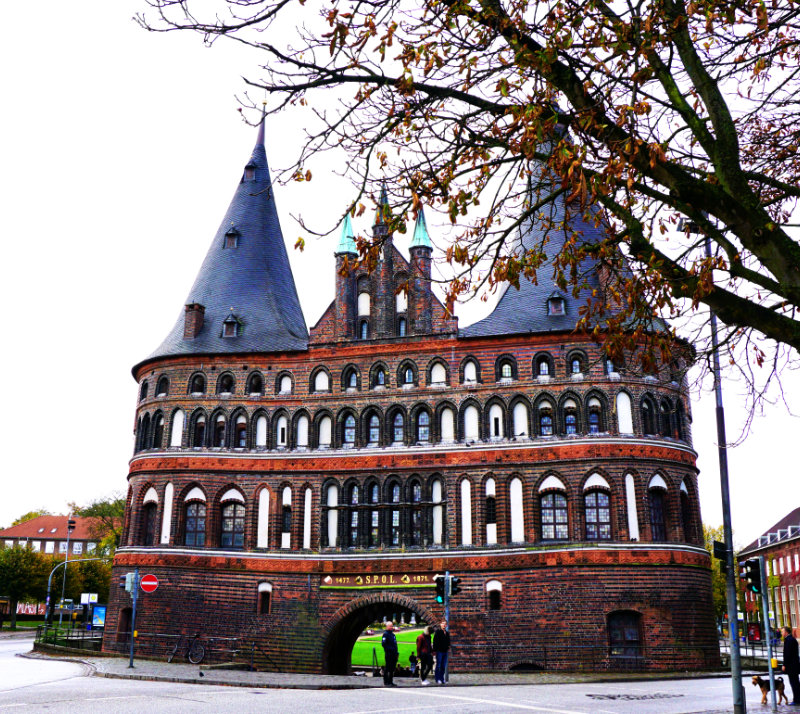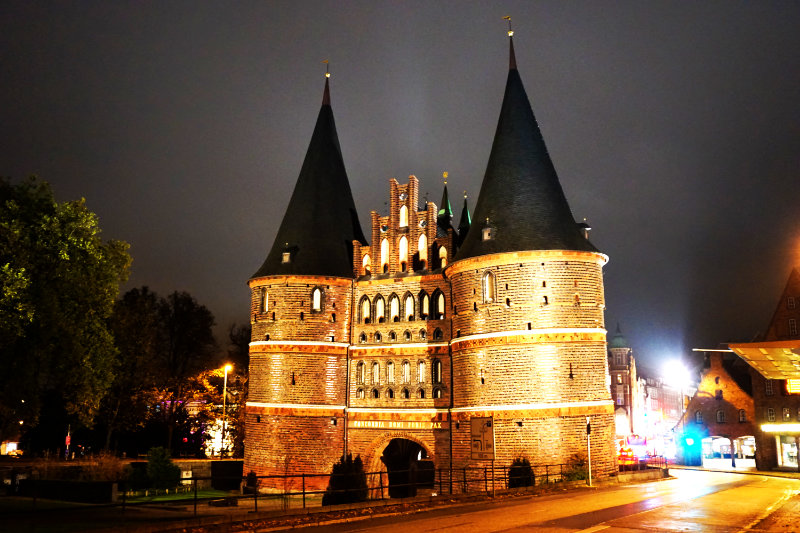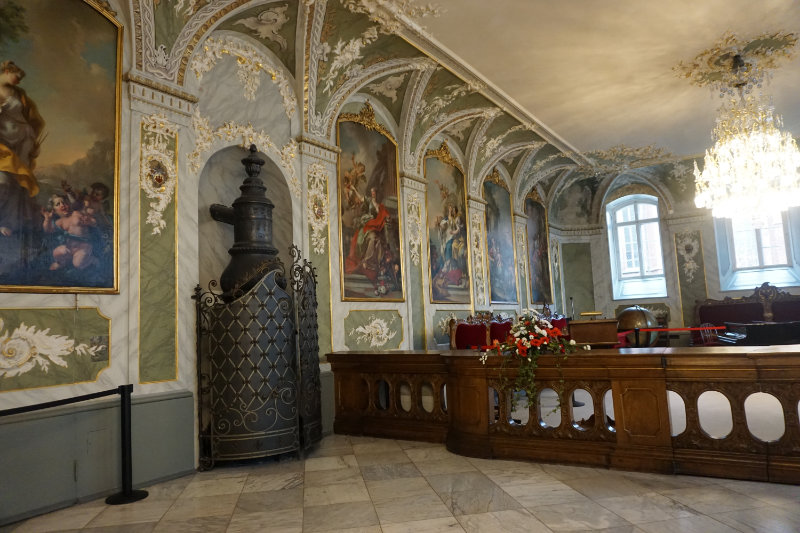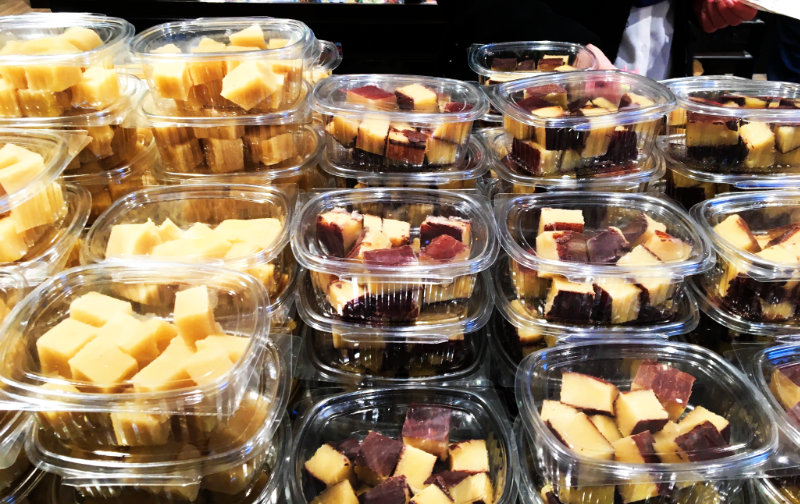One weekend every year, I travel with a group of friends. After we had already travelled to Hamburg and Prague in the previous years, we picked Lübeck as our next destination. Arrival: Saturday morning, departure: Sunday afternoon. A short trip to Lübeck.
We took the train to Lübeck from Berlin-Spandau. We changed in Büchen and continued to our final destination Lübeck. It was only a short journey that left me wondering why I hadn’t done that before. We arrived around 11.00 in the morning at the central station in Lübeck. We dropped our luggage off in the neighbouring H+ Hotel. This hotel was the ideal starting point for us. We slept well and the breakfast buffet was rich and varied.
Then we walked towards the old town of Lübeck. Window shopping, browsing shops, sightseeing, chatting… things an all-female travelling group does.
A walk through the city
On our walk through the city, we zigzagged across the old town of Lübeck.
We started at the train station which was opened in 1908. It is 109 meters long and houses 9 train platforms in total. It is the biggest train station in Schleswig.Holstein.

Puppenbrücke (Puppet Bridge)
Our path continued towards the Holstentor (Holsten Gate) via the Puppenbrücke (Puppet Bridge). The Puppenbrücke is the first stone bridge of Lübeck (built in 1768/69) and is adorned with lifesized statues.

The stones that became the material for the statues were delivered from quarries in Saxony and transformed into statues by Dietrich Jürgen Boy between 1774 and 1776. The statues are depictions of the Gods Mercury and Neptune, a Roman soldier and the personification of wisdom.
Mercury is the most well-known statue on the bridge which is partly because of the figure’s naked bottom and partly because of a poem under the statue by Emanuel Geibelund:
In Lübeck auf der Brücken (In Lübeck, on the bridge)
da steht der Gott Merkur. (stands the God Mercury)
Er zeigt in allen Stücken (showing off his all around…)
olympische Figur. (… Olympic physique)
Er wusste nicht von Hemden (He didn’t know of shirts)
in seiner Götterruh; (in his godly calmness)
darum kehrt er allen Fremden (that is why he is showing all strangers)
den bloßen Podex zu. (his naked butt)
His exposed bottom points west and legend has it that Mercury is showing it off to the Danish coming from that direction.
Holstentor (Holsten Gate)
The city’s landmark is the Holstentor. It was built between 1464 and 1478 and is one of the two only old city gates of Lübeck that still exists today (the other one is the Burgtor, Castle Gate).

When the fortification around the part of the city that faces the river Trave was built a gate was created that closed the city off at the western side. It served two purposes: Defense and representation. Two mighty towers with conical roofs frame the centre of the gate where the main passage is. When passing through the gate one can read the gold-plated inscription “CONCORDIA DOMI FORIS PAX” which translates to “Harmony inside, peace outside”. This was a greeting to the visitors of the city but at the same time a warning.

The side facing the city and the side facing away from the city each have a different design. The outside has small windows to not provide potential enemies with a target. The inside has many windows and is richly ornamented. It also carries the golden inscription “S.P.Q.L.”. This is an abbreviation that was added after restoration works in 1871 and that means “SENATUS POPULUSQUE LUBECENSIS” (Senate and People of Lübeck).
A closer look reveals that the Holsten Gate is lobsided. The gate was built on top of beams and over time the ground proved to be not stable enough to carry the load of the building. Already during construction, the Southern Tower began to lean west. Today, the gate sunk so much that the lowest shooting slits are about half a meter underground.
I like the gate best when it is illuminated in the evening.

Other things to discover
Lübeck’s Old Town has several fascinating spots that are waiting to be discovered on a stroll through town.

Directly opposite of St. Mary’s Church is the Buddenbrock House. This building was purchased by Heinrich and Thomas Mann’s grandfather in 1841 and remained in the family’s possession until 1891. The building is known through a novel by Thomas Mann in which it plays a key role.
We continued to St. Jacobi Church, one of the five main churches of Lübeck. The church is dedicated to seafarers and fishermen and is in close proximity to the shipping company. I was very impressed by the nave. Especially the organs, the mediaeval art on the columns and the white statues were to my taste.

The Holy Ghost Hospital is close by. Rich people from Lübeck donated a lot of money and created a large number of charitable organisations. This building, a hospital from 1286, is one of Europe’s oldest welfare facilities. Since the mediaeval times, it had room for around 100 people at a time. The building houses an old people’s home today.
We finished our first tour off with the second city gate that still exists today, the Bugtor (Castle Gate). But there is so much to see that I will have to come back to Lübeck another time.
Lübeck Town Hall
The Town Hall of Lübeck is open for visitors almost daily. We spontaneously decided to join a tour and we were not disappointed.
Construction of the Town Hall started in 1230 and the original plans for the building changed a lot over time. It was completed in 1309. The brick building is one of the biggest mediaeval town halls in Germany.

From the market square, one can see the renaissance pergola and the gothic shield wall. The big gaps in the decorative wall were installed as windbreakers.
A Dutch Renaissance staircase can be marvelled at from Breite Straße (Wide Street). It was built in 1594 and leads into a war chamber, a magnificent room inside the Town Hall in which the authorities not only debated economical issues but also issues concerning warfare.

Entering the Town Hall from Breite Straße gets you into a foyer with a staircase. Paintings decorate the walls and the red bricks emit a calm, almost cosy vibe. A window with the crest of Lübeck allows light to illuminate the stairs.
We got to visit some of the rooms inside the Town Hall. I liked the Audienzsaal (Audience Hall) and the Bürgerschaftssaal (Citizenship Hall) best.

Audienzsaal
The biggest room of the Lübeck Town Hall is the Audienzsaal (Audience Hall). The high court used to sit in this hall, today it is used for state visitors and festivities.

Visitors have to pass a very special door to get into the Audienzsaal. It was crafted by Master Tönnies Evers. The entire door is covered in beautiful carvings. What makes the door so special is that it is actually two doors in one, a big door and a small door. Back when the room was still used by the court it was decided by the verdict of the judge which door the culprit got to use on the way out. If a person was found to be innocent they were allowed to use the big door with their head held high. If they were found to be guilty they had to use the small door with their head down and their shoulders hunched over to fit through. Every citizen that was waiting in front of the court could immediately see the how the trial had ended.
The Audienzsaal’s décor is incredibly pompous. Countless paintings by an Italian artist hang from the walls. A big iron stove from the 18th century that was used to heat the room until 1963 catches the visitor’s attention.

Bürgerschaftssaal
We visited the Bürgerschaftssaal (Citizenship Hall) in the West Wing of the Town Hall. Once every last Thursday of the month the members of the city council meet here.

It is an imposing room not only because of its impressive height. A sequence of paintings on the wall shows the genesis of the Charta in 1229. The wood panels made the hall appear like a courtroom (or like they are often shown in old movies).
A closer inspection of the chairs and the tables is also worthwhile. The chairs were crafted in 1959 and are adorned with the crest of the city. The tables show depictions of the city and symbols that stand for different trades and crafts.

Address:
Breiten Straße 62
Lübeck
Guided Tours:
Monday to Friday: 1.00, 12.00, 15.00
Saturday: 13.20
(Dates of the tours may vary)
Admission:
Regular: 4€
with LÜBECKCARD: 2€
A boat tour through the Old Town of Lübeck
Sunday – for now it is sunny but there will most likely be rain later. We make use of the time by going on a boat tour.
Tour boats leave for their hour-long round trip in close proximity to the Holsten Gate (Holstentor). There are many different providers that offer their tours during peak season. When we came to Lübeck at the end of October the number of different tours to chose from was a bit smaller and so we picked the one that was due to start first.
Most passengers preferred to sit inside and out of the wind. I, however, positioned myself right in the airflow and came across many beautiful scenes.

We passed old salt silos. They are located at the upper Trave, directly at the Holsten Gate. They were built between 1579 and 1745. The brick buildings were used to store the salt that was brought to Lübeck via the old salt route on barges. From there it was transported to Scandinavia. The salt was the basis of the city’s wealth at the time.

We passed many ships that are moored in Lübeck. Some of them belong to the public charity “Museumshafen zu Lübeck e.V.” (Museum harbour Lübeck).
The captain of our tour boat asked me to sit down every now and again. We passed through some bridges that were quite low! In times where the water levels are high, no ship fits under those anymore.

The captain also shared information about Lübeck throughout the tour. His little stories and anecdotes truly added to the tour around the old town and the harbour of Lübeck.

I really liked the tour. I discovered many things that we didn’t see on our tour on foot. The duration of the tour was also spot on. After one hour in the autumn wind, I was getting chilly and was looking forward to our visit to the marzipan warehouse.

I love marzipan!
If you go to Lübeck and don’t try their marzipan, I can’t help you. I love marzipan and I could not resist its temptation.
We went to Niederegger, of course, and explored their shop. To be honest, their display is a little too cold and professional for my liking. I perceived the shop to be entirely focussed on tourists and shopping. Not a pleasant shopping experience for me.

I liked it better in the marzipan warehouse. We started at their café. Despite it being very big and also centred around the many tourists it still manages to remain cosy. We found a table for ten people which isn’t always the easiest thing. Drinks and cakes are served at a self-service bar. I chose a slice of marzipan cake and a hot chocolate with marzipan liquor. This caloric sin was an absolute dream…

Next, we went on a shopping spree in their marzipan shop. Their shop, too, is certainly catering to the tourists and the prices are a little on the high side. But still, this shop had a nice vibe to it. I bought marzipan loaves in different flavours, the marzipan liquor that I tried in the café and some reduced, damaged marzipan goods. The family at home was very pleased with my haul!
After shopping, we went to the small marzipan museum. They show what the old bakehouse looked like and have old and rare marzipan moulds on display. It is a neat little exhibition but coming to the marzipan warehouse only for that is probably not worth your time.

Address:
Die Lübecker Marzipan-Speicher seit 1995
Marzipanland GmbH
An der Untertrave 97-98
23552 Lübeck
Opening Hours:
Monday to Saturday: 11.00 – 18.00
Sunday: 12.00 – 18.00

Nancy Williams
The architecture and paintings are simply amazing. I also love you can take a boat tour of the city but you really had me at marzipan!
Christine
Lubeck looks like such a cool place to visit. The architecture is really pretty and interesting. I would like to take the boat tour too.
Joanne
Lubeck is beautiful! I just love the Holsten Gate and its roof peaks, especially at night. Those peaks are actually similar on the Lubeck Town Hall which is gorgeous. I love taking boat tours through picturesque European towns. It gives such a unique perspective.
Mohana
Lubeck seems like a charming old town, steeped in equal measures history and beauty. Loved how your photographs capture the grandeur of the time gone by. A boat ride around Lubec is something I would be very interested in. And ahh the marzipans, to die for :)
Travel with Mei and Kerstin
Oh why haven’t we ever thought about visiting Lübeck! It looks like such a charming city! We’d love to visit the Bürgerschaftssaal and taste some local Marzipan!.I’m not a big fan of marzipan, but Kerstin loves it! Anyway, thanks a lot for inspiring us with this post. We’re putting Lübeck on our bucket list and hopefully we’ll get to visit it next year along with nearby Hamburg!
Delphine
I love how these Northern European towns are so well preserved and full of history. I wouldn’t miss the Citizenship Hall and the sweet shop… Marzipan might be a bit too sweet for me, but I’m sure I’ll find something!
Wendy
I had no idea Lubeck was so pretty with so much history. I think my favorite thing would be the boat ride. I really like that on the hour long tour the captain told you about the city. Of course I would have to try the Marzipan.
ania
I remember Lubeck only from history lesson. I never assume that its so charming. I must put it on my places to see list
Sam Sees World
What a charming city! At first glance, I was thinking the buildings and gates looked lopsided, happy to see there is an explanation for this & my eyes aren’t playing tricks on me. If I were to go here I’d definitely check out the Old Town of Lübeck, it looks so magical.
Heather
Lubeck has a lot of charm and some beautiful landmarks. I found the lopsided Holsten Gate really interesting and I would love to do a night shoot there as you did. I also loving visiting old hospitals too so I would love the Holy Ghost Hospital!